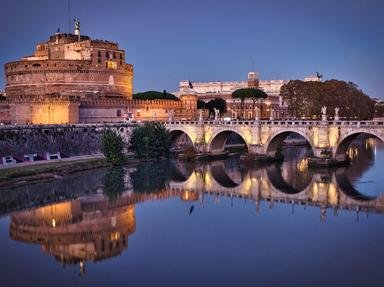Quiz Answer Key and Fun Facts
1. The origin of the Graeco-Roman World dates back to approximately the 8th century BC, and traditionally begins with the works of which man?
2. Geographically the Graeco-Roman World centered around two seas. One was the Mediterranean. Which of the following was the other?
3. There were two main languages that were the lingua franca of the Graeco-Roman World, even though they were not the languages used by many of the native people. What were they?
4. In the Graeco-Roman World mythologies merged and flourished until Christianity became the state religion of the Roman Empire. Most of the Greek and Roman deities had the same names.
5. The Seven Sages of Greece were all philosophers.
6. Which of the following is NOT considered a core area of the Graeco-Roman World?
7. The Graeco-Roman World influenced architectural design for centuries. While the orders of Greek columns are well known, the Romans also created two classical orders. One was called Composite. What was the other called?
8. Which of the famous members of a triumvirate of Rome began his career by receiving a wide-ranging command against the Mediterranean pirates?
9. Which Roman Emperor, known for his baths, issued the "Constitutio Antoniniana", which gave all free people in the Empire Roman citizenship?
10. The Graeco-Roman World historically came to an end with the fall of Rome in 476 AD. Which of the following events ended the Roman Empire that year?
Source: Author
ponycargirl
This quiz was reviewed by FunTrivia editor
gtho4 before going online.
Any errors found in FunTrivia content are routinely corrected through our feedback system.
